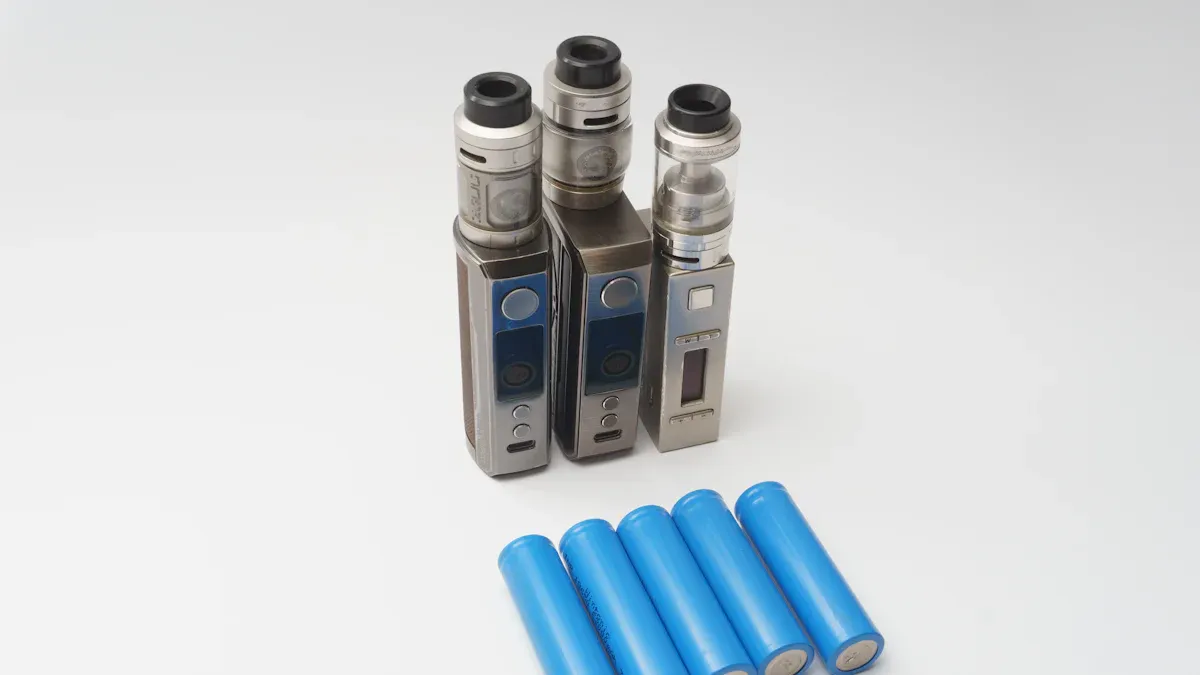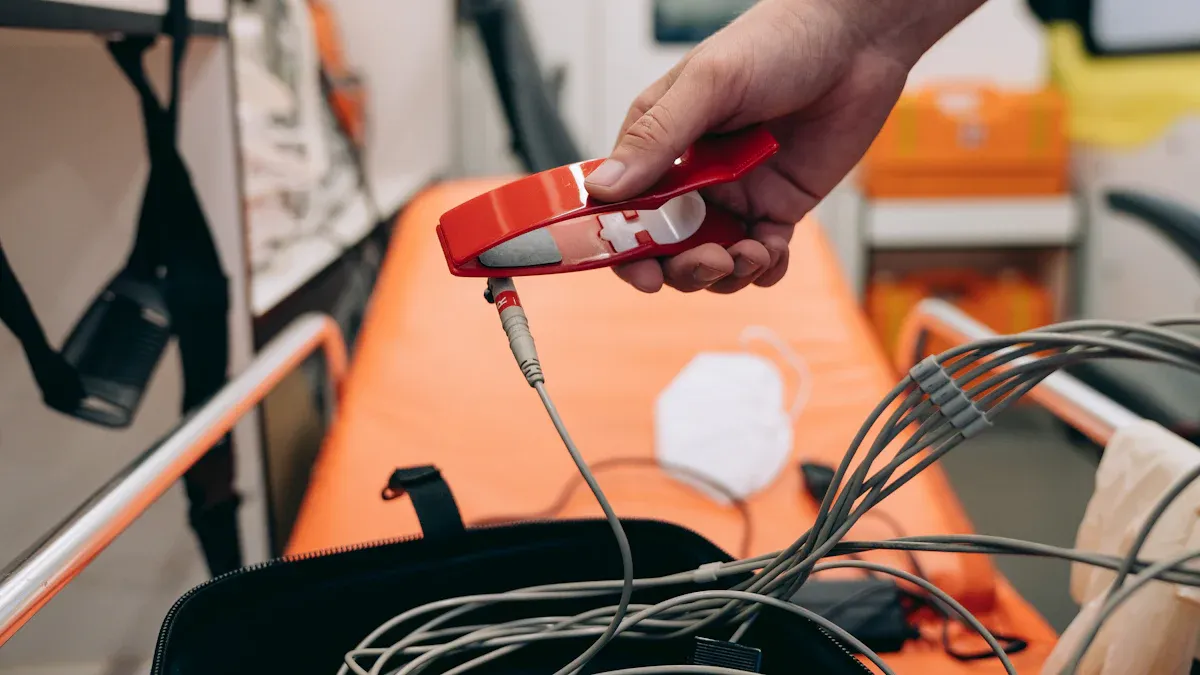
Battery stability in medical equipment directly affects patient safety and diagnostic reliability. You face unique challenges with lithium batteries in ivds, including performance consistency and lifespan. The stability requirements for the batteries of in vitro diagnostic equipment (IVD) demand that you select high-quality batteries and ensure robust integration across all medical equipment.
Key Takeaways
Select high-quality lithium batteries for IVD devices to ensure consistent performance and patient safety.
Implement a regular calibration schedule to maintain accurate battery status and prevent unexpected shutdowns.
Document assembly processes and use traceability methods to support compliance and improve device reliability.
Part 1: Stability Requirements for IVD Batteries

1.1 Defining Stability in IVD Equipment
You must understand the stability requirements for the batteries of in vitro diagnostic equipment (IVD) to ensure reliable operation in critical medical environments. Stability in this context means that your lithium battery packs deliver consistent performance, maintain capacity over time, and support the accuracy of test results. In medical applications, even minor fluctuations in battery output can compromise diagnostic integrity and patient safety.
When you select batteries for IVDs, you need to focus on three core aspects:
Energy Density: High energy density allows your devices to operate longer between charges, reducing downtime and maintenance.
Service Life: Extended service life ensures that your equipment remains operational over many cycles, minimizing replacement frequency.
Reliability: Reliable batteries provide stable voltage and current, which is essential for the sensitive electronics in diagnostic devices.
Tip: Always verify that your battery supplier provides detailed documentation on stability testing and traceability. This documentation supports compliance and helps you track performance over time.
1.2 Key Performance Metrics
You should evaluate the stability requirements for the batteries of in vitro diagnostic equipment (ivd) using specific performance metrics. These metrics help you compare different lithium battery chemistries and select the best fit for your application. The most common chemistries in medical and industrial sectors include LiFePO4, NMC, LCO, LMO, and LTO. Each chemistry offers unique advantages in terms of platform voltage, energy density, and cycle life.
Here is a comparison of key lithium battery chemistries used in ivds:
Chemistry | Platform Voltage (V) | Energy Density (Wh/kg) | Cycle Life (cycles) | Typical Use Case |
|---|---|---|---|---|
LiFePO4 | 3.2 | 90–120 | 2000–7000 | Medical, industrial |
NMC | 3.6–3.7 | 150–220 | 1000–2000 | Medical, robotics |
LCO | 3.7 | 150–200 | 500–1000 | Consumer electronics |
LMO | 3.7 | 100–150 | 700–1500 | Security, industrial |
LTO | 2.4 | 70–80 | 7000–20000 | Infrastructure, BMS |
Note: For more details on battery management systems (BMS), see our BMS solutions.
You must also consider the impact of regular calibration on smart batteries. Calibration corrects tracking errors in state-of-charge readings and ensures that your devices report accurate battery status. Without regular calibration, smart batteries may drift, leading to unexpected shutdowns or inaccurate diagnostics.
State-of-Charge Monitoring: Enables you to track remaining capacity and schedule maintenance.
Cell Balancing: Ensures each cell in the pack operates at optimal voltage, extending service life.
End-of-Life Alerts: Notifies you when batteries approach the end of their usable life, supporting proactive replacement.
By focusing on the stability requirements for the batteries of in vitro diagnostic equipment (IVD), you can maximize uptime, reduce maintenance costs, and protect patient safety. You should implement a regular calibration schedule and select chemistries that align with your device’s operational profile.
Part 2: Assembly and Integration
2.1 Assembly Best Practices
You need to follow strict assembly protocols when integrating batteries into in vitro diagnostic devices. Proper assembly reduces the risk of electrical faults and extends the lifespan of your lithium battery packs. Always use standardized procedures for connecting cells, especially with chemistries like LiFePO4, NMC, LCO, LMO, and LTO. This approach ensures consistent performance across all devices.
You should document every step of the assembly process. Clear records help you trace each battery pack’s origin and assembly details. This traceability is essential for medical applications, where device reliability directly impacts patient outcomes. When you use batteries in robotics, security, or industrial sectors, traceability also supports rapid troubleshooting and compliance.
Tip: Use barcodes or digital logs to track each battery pack through production and integration. This practice simplifies recalls and quality audits.
2.2 Quality Control
Quality control starts with thorough documentation and continues throughout the product lifecycle. You must monitor each batch of batteries for defects and performance issues. Effective quality management relies on:
Documentation that ensures compliance with safety standards, which is crucial for device reliability.
Consistent monitoring and improvement of assembly processes through detailed records.
Traceability that enables quick identification of issues, maintaining reliability over time.
You should test batteries under real-world conditions before final integration. This step verifies that each pack meets the demands of medical, industrial, and infrastructure environments. By prioritizing quality control, you protect your brand reputation and ensure long-term device stability.
Part 3: Battery Management and Calibration

3.1 Smart Battery Features
You rely on advanced smart battery features to maintain the integrity of ivds in demanding environments. Lithium battery packs with built-in battery management systems (BMS) help you monitor state-of-charge, balance cells, and receive end-of-life alerts. These features support the continuity of power supply, which is essential for medical and industrial applications. You protect data integrity by using batteries that provide stable voltage and current, reducing the risk of diagnostic errors.
Smart batteries in ivds offer several benefits:
State-of-Charge Monitoring: You track remaining capacity and schedule maintenance before failures occur.
Cell Balancing: You ensure each cell operates at optimal voltage, extending service life and improving safety.
End-of-Life Alerts: You receive notifications when batteries approach the end of their usable life, allowing proactive replacement.
Tip: Choose lithium battery packs with robust BMS to maximize safety and device integrity in medical, robotics, and security systems (medical, robotics, security).
3.2 Calibration and Monitoring
You must calibrate smart batteries regularly to correct tracking errors and maintain reliability. Calibration ensures that state-of-charge readings remain accurate, supporting the integrity of diagnostic results. You monitor battery performance using automated systems, which helps you detect anomalies early and prevent unexpected shutdowns. Regular calibration also safeguards data integrity, especially in medical and industrial sectors.
You should establish a calibration schedule for all lithium battery packs in ivds. This practice improves safety and supports the continuity of power supply. You maintain device reliability and protect patient outcomes by prioritizing calibration and monitoring.
Part 4: Safety and Compliance
4.1 Safety Testing
You must prioritize safety testing to meet strict safety requirements for lithium battery packs in in vitro diagnostic devices. Safety testing helps you identify risks before devices reach the field. You verify that each battery pack can withstand electrical, thermal, and mechanical stress. This process ensures that your devices operate reliably in medical, robotics, and security environments. You protect patient safety by confirming that batteries do not overheat, leak, or fail unexpectedly.
You should use a structured approach to safety testing:
Test for short-circuit, overcharge, and discharge protection.
Simulate real-world operating conditions for each battery chemistry, including LiFePO4, NMC, LCO, LMO, and LTO.
Document all test results for traceability and compliance audits.
Note: Consistent safety testing supports your compliance with both internal safety requirements and external regulations, including the eu battery regulation.
4.2 Regulatory Standards
You must meet regulatory standards to ensure your lithium battery packs comply with the eu battery regulation and other global directives. Proper documentation and labeling are essential for demonstrating compliance. You need to provide the following:
Compliance with the Batteries Directive for medical or IVD devices.
Batteries must not contain more than 0.0005% mercury or 0.002% cadmium by weight.
Label each battery with the separate collection symbol (crossed-out wheelie bin).
If cadmium exceeds 0.002%, mark with ‘Cd’; if lead exceeds 0.004%, mark with ‘Pb’.
Design labeling to meet Quality System Regulation requirements and clearly identify controls.
You should maintain clear records for every battery pack. This documentation helps you pass regulatory inspections and supports your quality management system. By following these steps, you meet safety requirements and build trust with your partners in the medical, industrial, and infrastructure sectors.
To maximize battery stability in ivds, you should:
Define device requirements and select compliant lithium battery packs.
Audit suppliers and document compliance with EU Battery Regulation.
Train teams on labeling, recycling, and end-of-life management.
Regularly calibrate and monitor batteries.
For tailored solutions, request a custom battery consultation.
FAQ
What battery chemistries does Large Power recommend for medical and industrial IVD devices?
You should consider LiFePO4, NMC, LCO, LMO, and LTO chemistries. Medical, industrial, and LiFePO4 applications benefit from high cycle life and stable voltage.
How do you ensure traceability and compliance for lithium battery packs in robotics and security systems?
You document each pack’s origin and assembly. Use barcodes or digital logs for robotics, security, and lithium-ion systems. This supports audits and regulatory inspections.
Where can you request a custom battery consultation for your infrastructure or consumer electronics project?
You can contact Large Power for tailored solutions. Request a custom battery consultation for infrastructure or consumer electronics lithium-polymer/LiPo and solid-state battery projects.






